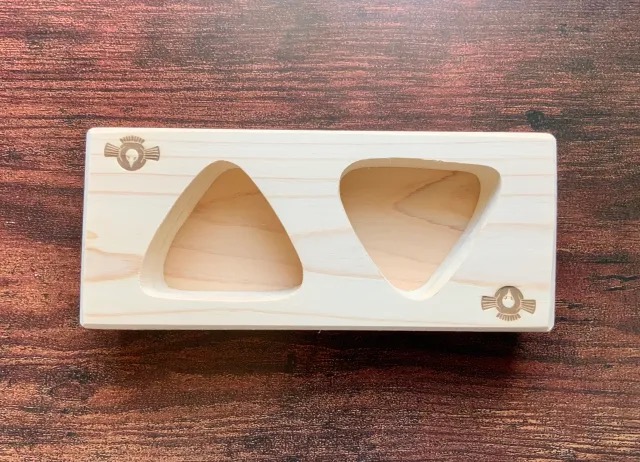
We find out if this sell-out hit product is worth the hype.
Onigiri rice balls are commonly made by hand in Japan, but they can be difficult to create, especially when the rice is hot as it makes it hard to hold, distorting the shape. That’s where rice specialists Akomeya are here to help, with an exclusive rice ball mould that’s so popular it sells out every time it becomes available.
According to reviews from customers, the mould helps to make beautiful onigiri that look like something you’d buy at a fancy department store. There are two sizes available, small and large, and as we were curious to find out if the mould lived up to the hype, we played things safe by opting for the smaller version.
▼ Sylvanian Families characters not included.
First impressions were undeniably good, as the cypress wood had a beautifully fresh, woodsy aroma. This not only adds flavour to the rice but helps to improve it, as the wood absorbs excess moisture so you can enjoy the rice in its optimal state.
To use the mould, first moisten it with water and then fill the cavities with rice up to the halfway point. Then add your favourite filling, like an umeboshi pickled plum, as seen on the left of the image below, before covering it with rice (right, below).
Though the rice was piping hot it had no trouble settling in place and the filling stayed put in the centre which was impressive, seeing as it can move about a bit during hand-moulding. To determine which was better — wood-moulded or hand-moulded — we crafted a rice ball by hand, using cling wrap to keep our fingers clean and fashion it into a triangular shape.
▼ The rice was very hot to hold, even through the plastic wrap.
Comparing the completed rice balls, we found that the rice balls made with the mould (right, below) had a more beautiful shape.
Upon tasting them both, the wood-moulded onigiri (right, below) won yet again, as the grains of rice were noticeably fluffier. Looking closely, you can see that the grains of rice in the hand-moulded variety are flattened, while the grains from the wood mould remained plump, despite being packed down quite tightly.
As for the filling, it seemed to be confined to one small section in the hand-moulded type, whereas the wood mould (right, below) helped to disperse it more evenly, creating a more well-balanced flavour.
We definitely preferred the wood mould, rating it higher in terms of the resulting flavour and texture of the rice ball. However, would it still do well with different ingredients?
▼ Left to right: Plum Chirimenjako (dried young sardines), Green Onion and Bacon, Cheese Okaka (finely chopped dried bonito flakes), Furikake (dried seasoning) with Nori (seaweed).
As you can see, the wood mould did a fantastic job yet again, but we did find it had one weakness — when you add rice that’s been blended with large ingredients, like green onion and bacon, it creates gaps in the rice ball, causing it to break apart when you hold it in your hand.
That’s easily fixed though, because instead of adding the ingredients to the rice before it gets to the mould, simply add them as a filling instead and you should have no problems.
▼ Oh, and you’ll want to have a rice scoop handy to help pat the rice in, as it’s hot to touch.
After using the mould, we can safely say it exceeded our expectations, so much so that we’re kind of lamenting the fact we didn’t purchase the larger size as well. Luckily for us, though, the large size is still an option as it’s now back in stock, along with the small version, after months of being out of stock due to popularity. It certainly is worth the hype, and deserves to be on your shopping list when visiting Japan, where you can purchase it at Akomeya stores and online, priced at 2,200 yen (US$15.11) for the small and 2,530 yen for the large.
Related: Akomeya Tokyo, Rakuten Market
Photos ©SoraNews24
● Want to hear about SoraNews24’s latest articles as soon as they’re published? Follow us on Facebook and Twitter!

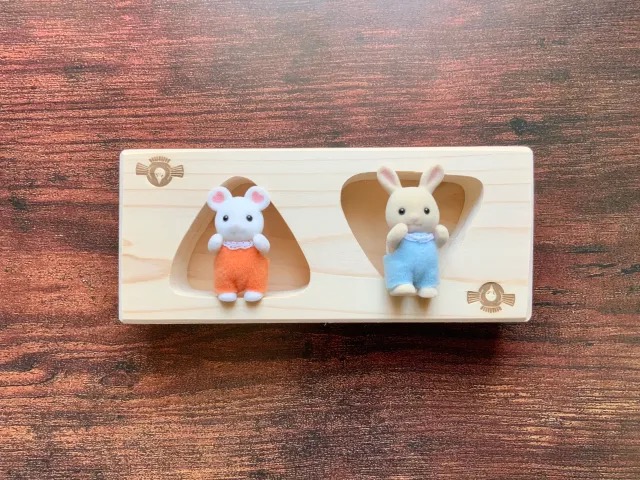
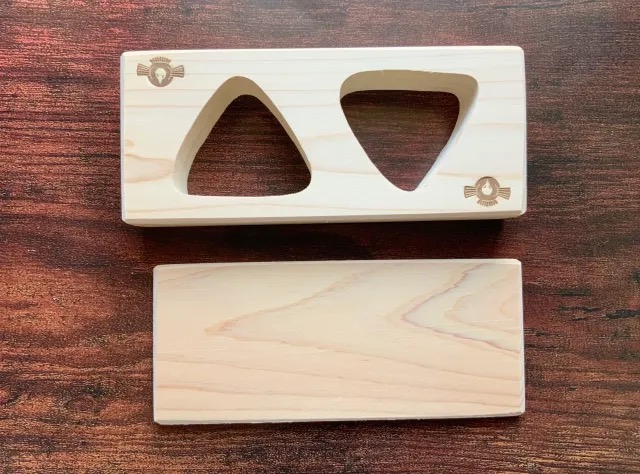
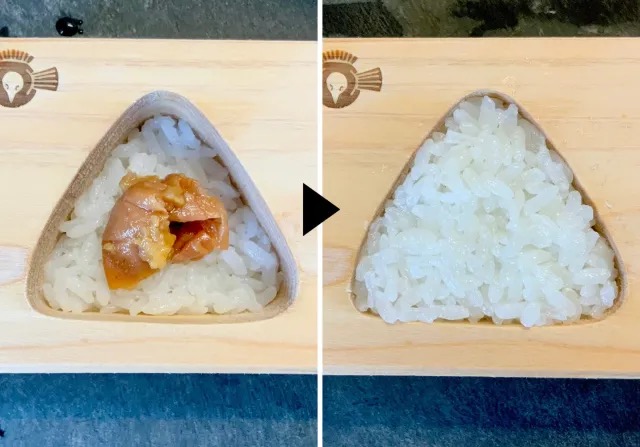
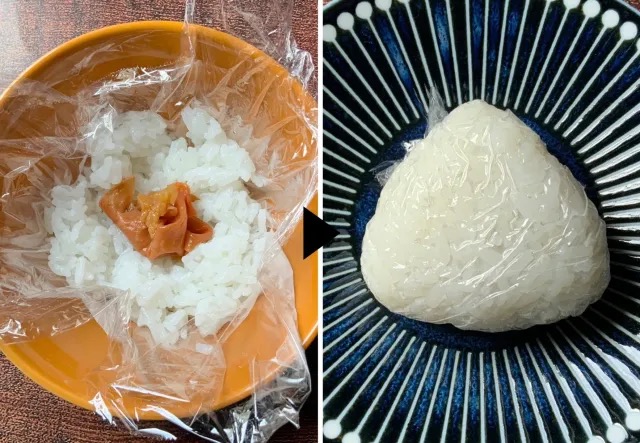
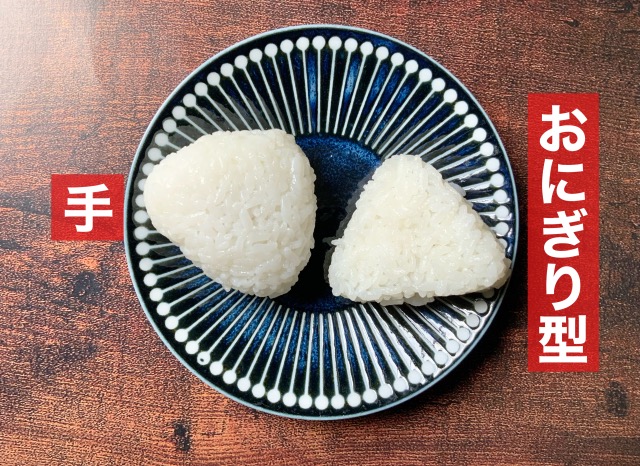
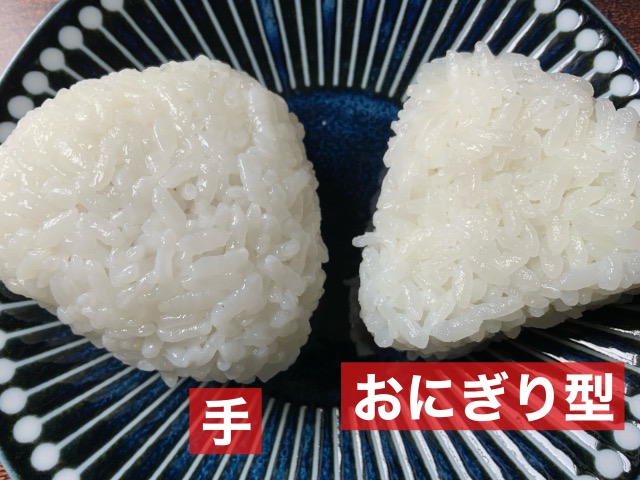
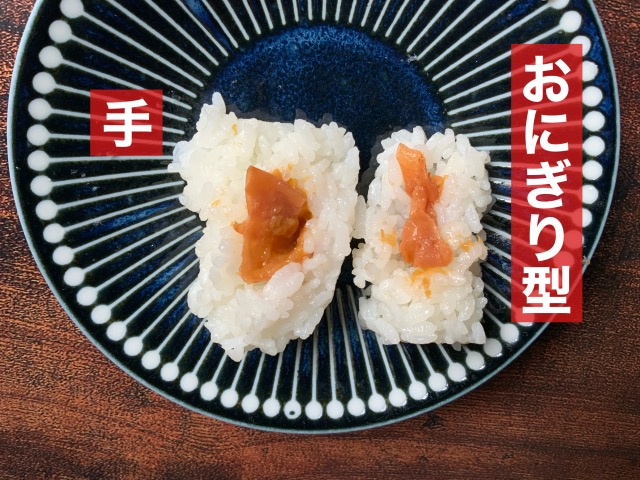
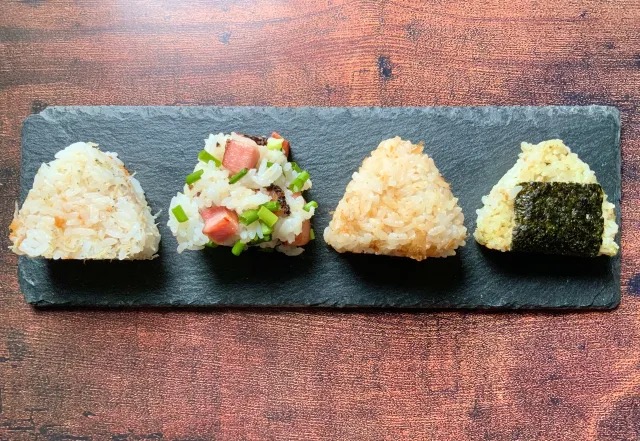
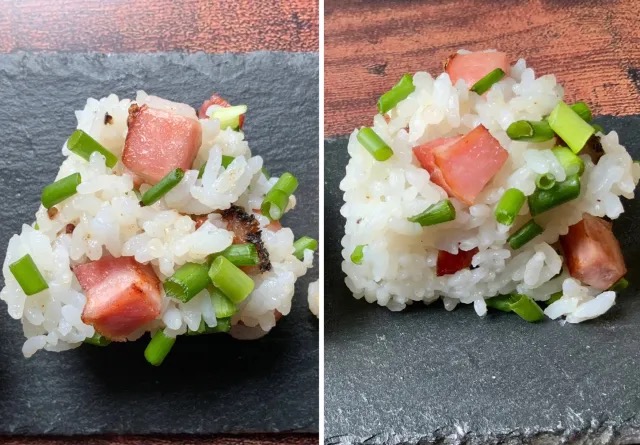
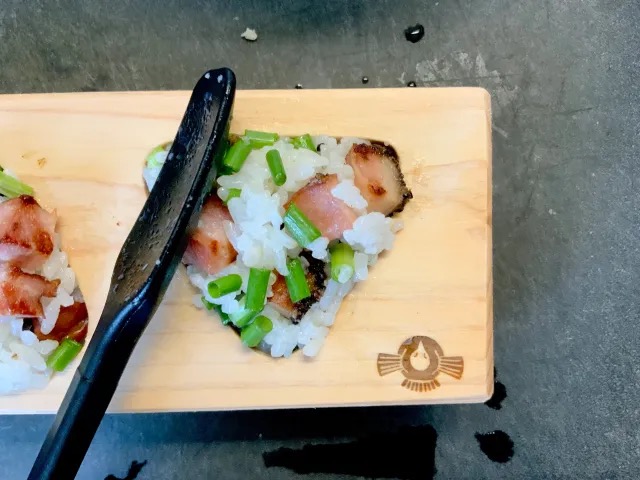
 Which Japanese convenience store has the best salted onigiri rice balls?
Which Japanese convenience store has the best salted onigiri rice balls? Say hello to the Big Bomb Onigiri, a beast of a Japanese rice ball
Say hello to the Big Bomb Onigiri, a beast of a Japanese rice ball The polite way to eat onigiri rice balls sparks debate online
The polite way to eat onigiri rice balls sparks debate online Tapioca onigiri brings boba to the world of rice balls
Tapioca onigiri brings boba to the world of rice balls Should you warm up your convenience store onigiri rice balls in the microwave?【Taste test】
Should you warm up your convenience store onigiri rice balls in the microwave?【Taste test】 10 times to avoid traveling in Japan in 2026
10 times to avoid traveling in Japan in 2026 Umamusume anime girl plushie recalled for having parts she absolutely should not have【Pics】
Umamusume anime girl plushie recalled for having parts she absolutely should not have【Pics】 Ramen restaurant’s English menu prices are nearly double its Japanese ones, denies discriminating
Ramen restaurant’s English menu prices are nearly double its Japanese ones, denies discriminating We ate sushi made from Japan’s most expensive tuna ever【Taste test】
We ate sushi made from Japan’s most expensive tuna ever【Taste test】 Our 52-year-old pole dancing reporter shares his tips for achieving your New Year’s exercise goal
Our 52-year-old pole dancing reporter shares his tips for achieving your New Year’s exercise goal This quiet forest cafe in Japan lets you read all day in the house of a famous author
This quiet forest cafe in Japan lets you read all day in the house of a famous author Nearly one in ten young adults living in Japan isn’t ethnically Japanese, statistics show
Nearly one in ten young adults living in Japan isn’t ethnically Japanese, statistics show Adorable New “Pokemomo” Brand Goods Coming to Pokemon Center Stores Across Japan
Adorable New “Pokemomo” Brand Goods Coming to Pokemon Center Stores Across Japan We visit a Japanese cafe famous for John Lennon and epic pancakes
We visit a Japanese cafe famous for John Lennon and epic pancakes Japanese beef bowl chain Sukiya’s 2026 Smile Box lucky bag basically pays for itself
Japanese beef bowl chain Sukiya’s 2026 Smile Box lucky bag basically pays for itself Hayao Miyazaki says Happy New Year to Studio Ghibli fans with new art for Year of the Horse
Hayao Miyazaki says Happy New Year to Studio Ghibli fans with new art for Year of the Horse Starbucks Japan ready to get Year of the Horse started with adorable drinkware and plushies【Pics】
Starbucks Japan ready to get Year of the Horse started with adorable drinkware and plushies【Pics】 Top Japanese cosplayer Enako returns to Comiket after 6 years, creates mayhem with admirers
Top Japanese cosplayer Enako returns to Comiket after 6 years, creates mayhem with admirers Cup Noodle tries an authentic Jiro-style ramen, but something’s not quite right
Cup Noodle tries an authentic Jiro-style ramen, but something’s not quite right The best Starbucks Japan Frappuccinos we want to drink again in 2026
The best Starbucks Japan Frappuccinos we want to drink again in 2026 We revisited Sweets Paradise after a decade to see if Japan’s dessert buffet still delivers
We revisited Sweets Paradise after a decade to see if Japan’s dessert buffet still delivers That time Seiji called JASRAC to ask why he didn’t get paid royalties for his song being on TV
That time Seiji called JASRAC to ask why he didn’t get paid royalties for his song being on TV 7-Eleven Japan starts new temporary luggage storage service in over 300 branches
7-Eleven Japan starts new temporary luggage storage service in over 300 branches Disillusionment at Tsukiji’s tourist-target prices led us to a great ramen restaurant in Tokyo
Disillusionment at Tsukiji’s tourist-target prices led us to a great ramen restaurant in Tokyo Starbucks teams up with 166-year-old Kyoto doll maker for Year of the Horse decorations【Photos】
Starbucks teams up with 166-year-old Kyoto doll maker for Year of the Horse decorations【Photos】 Tokyo considering law requiring more trash cans following litter increase in heavily touristed area
Tokyo considering law requiring more trash cans following litter increase in heavily touristed area Tokyo’s Tsukiji sushi neighborhood asks tour groups to stay away for the rest of the month
Tokyo’s Tsukiji sushi neighborhood asks tour groups to stay away for the rest of the month Tokyo event lets you travel back in time, for free, to celebrate 100 years since Showa era start
Tokyo event lets you travel back in time, for free, to celebrate 100 years since Showa era start Japan may add Japanese language proficiency, lifestyle classes to permanent foreign resident requirements
Japan may add Japanese language proficiency, lifestyle classes to permanent foreign resident requirements Lacquerware supplier to emperor of Japan and Pokémon team up for new tableware
Lacquerware supplier to emperor of Japan and Pokémon team up for new tableware Starbucks Japan releases new zodiac chilled cup drink for 2026
Starbucks Japan releases new zodiac chilled cup drink for 2026 Survey asks foreign tourists what bothered them in Japan, more than half gave same answer
Survey asks foreign tourists what bothered them in Japan, more than half gave same answer Japan’s human washing machines will go on sale to general public, demos to be held in Tokyo
Japan’s human washing machines will go on sale to general public, demos to be held in Tokyo We deeply regret going into this tunnel on our walk in the mountains of Japan
We deeply regret going into this tunnel on our walk in the mountains of Japan Studio Ghibli releases Kodama forest spirits from Princess Mononoke to light up your home
Studio Ghibli releases Kodama forest spirits from Princess Mononoke to light up your home Major Japanese hotel chain says reservations via overseas booking sites may not be valid
Major Japanese hotel chain says reservations via overseas booking sites may not be valid Put sesame oil in your coffee? Japanese maker says it’s the best way to start your day【Taste test】
Put sesame oil in your coffee? Japanese maker says it’s the best way to start your day【Taste test】 No more using real katana for tourism activities, Japan’s National Police Agency says
No more using real katana for tourism activities, Japan’s National Police Agency says Starbucks Japan reveals new sakura drinkware collection, inspired by evening cherry blossoms
Starbucks Japan reveals new sakura drinkware collection, inspired by evening cherry blossoms Updated cherry blossom forecast shows extra-long sakura season for Japan this year
Updated cherry blossom forecast shows extra-long sakura season for Japan this year Human washing machine pods coming to Japanese hotels【Photos】
Human washing machine pods coming to Japanese hotels【Photos】 The Big Bomb Onigiri Japanese rice ball helps us conquer mountain race but conquers us in the end
The Big Bomb Onigiri Japanese rice ball helps us conquer mountain race but conquers us in the end Onikun: Epic onigiri so big they’re half demon, half rice ball
Onikun: Epic onigiri so big they’re half demon, half rice ball Lawson now sells old rice as “vintage” onigiri in Japan
Lawson now sells old rice as “vintage” onigiri in Japan Space Onigiri: Do these long-lasting Japanese rice balls taste any good on planet Earth?
Space Onigiri: Do these long-lasting Japanese rice balls taste any good on planet Earth? The 10 best types of onigiri rice balls to try in Japan【Survey】
The 10 best types of onigiri rice balls to try in Japan【Survey】 Japanese convenience store packs a whole bento into an onigiri rice ball
Japanese convenience store packs a whole bento into an onigiri rice ball Onigiri without the nigiri – Japan’s traditional rice balls get an update
Onigiri without the nigiri – Japan’s traditional rice balls get an update Which Japanese convenience store has the best plain onigiri rice balls?
Which Japanese convenience store has the best plain onigiri rice balls? Beyond rice balls: How to make an edible onigiri rice cat【Video】
Beyond rice balls: How to make an edible onigiri rice cat【Video】 The surprising semi-secret ingredient in many Japanese convenience store rice balls: oil
The surprising semi-secret ingredient in many Japanese convenience store rice balls: oil Japanese vending machine sells…onigiri cakes!?
Japanese vending machine sells…onigiri cakes!? The difference between onigiri rice balls in Tokyo and Osaka
The difference between onigiri rice balls in Tokyo and Osaka Onigiri in Paris: Small lunch shop brings traditional Japanese rice balls to France
Onigiri in Paris: Small lunch shop brings traditional Japanese rice balls to France Drinkable rice balls appear in Japan, allow you to chug the country’s favorite snack on the go
Drinkable rice balls appear in Japan, allow you to chug the country’s favorite snack on the go SmartHan Rice Tubes Offer Japanese New Way to Snack! Is This the End of Onigiri?
SmartHan Rice Tubes Offer Japanese New Way to Snack! Is This the End of Onigiri? American rice ball restaurant takes liberties with classic Japanese snack
American rice ball restaurant takes liberties with classic Japanese snack
Leave a Reply